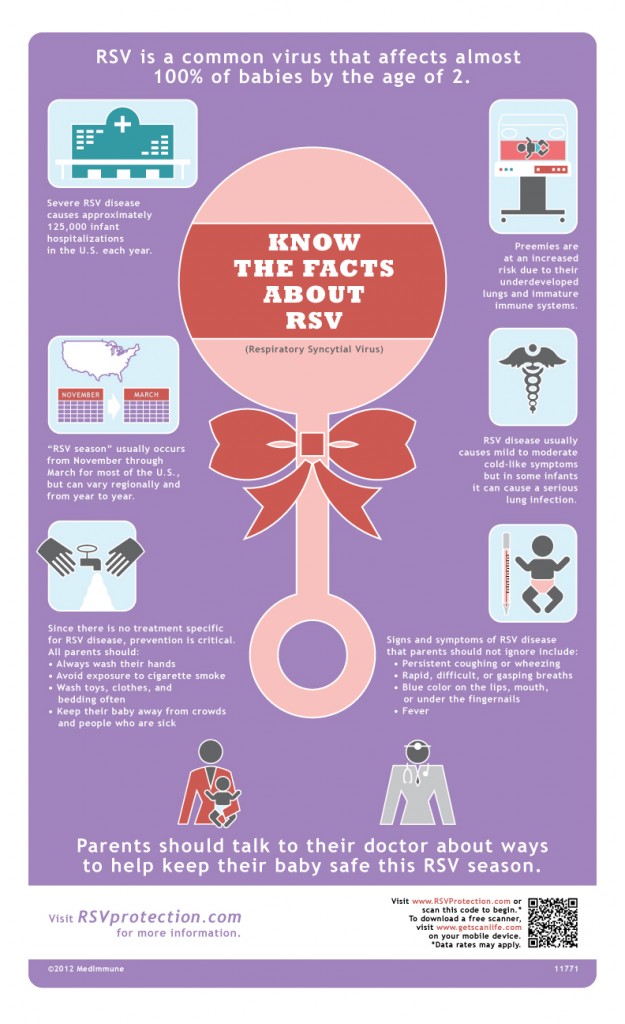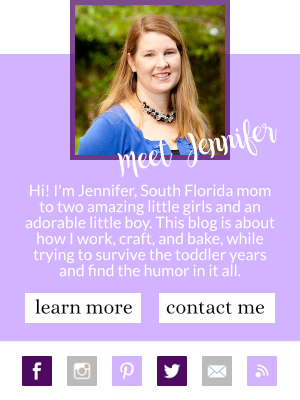As a daycare mom, germs scare the hell out of me. Not only do I not want my kids sick, but I don’t exactly have a flexible job to take time off to be with them when they are sick. I want and need my kids to stay well, but it’s so hard when I send them to a virtual Petri dish each day. Everyday Greenleigh comes home with stories of “so-and-so was sick today” or “such-and-such didn’t feel well”, and I brace for impact. Will their illness strike our house? What did little “so-and-so” have anyway? How contagious was it…exactly? Or will I get lucky and my kids’ immune systems be enough to ward off the evil germs? So I do what any mom does and hope for the best and prepare for the worst – which means lots of hand washing, vitamins, and disinfecting – but even with all that, we certainly have our share of sick days.
And that’s certainly no surprise when you look at the numbers: approximately two-thirds of all infants by the time they hit the age of 1 will be affected by RSV, and almost 100% of toddlers will have been affected by RSV by the time they turn 2. Those are some staggering numbers (and a whole lot of sick days!). In case you’ve never heard of it before, RSV, or respiratory syncytial, is a highly contagious, seasonal virus that affects a child’s lungs. In North America, it is commonly seen in infants and young toddlers between the months of November and March. Often, a child will have a mild case of RSV and only exhibit cold-like symptoms, but in other children it can snowball into a serious respiratory infection. And that’s exactly what happened to us when Greenleigh was 11 months old and we were struggling with her asthma diagnosis. Trust me, asthma + RSV = no fun at all. And sure enough, we ended up in the hospital. At the time I had no idea how common that was, but it turns out that RSV is actually the leading cause of infant hospitalizations.
Severe cases of RSV, like Greenleigh’s a few years ago, are commonly identified by continuous coughing and wheezing, caved in chest when trying to breath, gasping for breath, extreme fatigue, and fever. Unfortunately for us, RSV is particularly prevalent in daycare environments where kids share toys, which makes it particularly scary for daycare moms like me, but in all reality, it can spread any place where kids share toys and, well, space in general. Even scarier is that there is no cure for RSV, so prevention is key. That means washing hands, keeping bedding and toys clean, and avoiding cigarette smoke. Luckily, we haven’t had to go to the hospital for RSV again, but I’m always on the look out for symptoms.
For more information on RSV, be sure to check out the RSV Protection website and follow the #RSVProtection hashtag on Twitter.
How do you keep your kids well during the winter months?
Disclosure: I wrote this review while participating in a campaign for Mom Central Consulting on behalf of MedImmune and I received a promotional item to thank me for my participation.


somehow we avoided this when my kids were younger but plenty of friends had it and it is scary
So, so important. My daughter was hospitalized with RSV when she was younger.
So scary!! Thanks for raising awareness of this disease!!
One of my daughter’s children had RSV. Thankfully, her child was okay, but I think that her child had to be admitted to the hospital for a short while, if I remember correctly.
Dawn